Edible Periwinkles
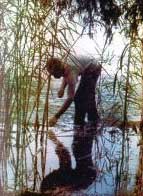 Eating snails doesn’t have to be a treat unique only to the French or people at high class dinner parties. You too can feast on escargot.
Eating snails doesn’t have to be a treat unique only to the French or people at high class dinner parties. You too can feast on escargot.
The Common or Edible Periwinkle (Littorina littorea, and L. littoralis), the Smooth Periwinkle ( L. obtusata), Gulf Periwinkle (L. Irrorata) and the Southern Periwinkle (L. Angulifera) are sea snails found in great quantities in the maritime states of New England, off the coast of Eastern Canada and down through Florida and the Gulf of Mexico. At low tide you can find more of these snails clinging to the rocks than you can ever hope to make use of.
Read more...
Stalking the Wild Day Lily
 Early spring sees the arrival of one of my favorite plants to forage. It's then that the first new growth of Hemerocallis fulva, the Wild Day Lily makes it's appearance. From now until late fall, nearly every part of this plant will provide us with either food, cordage or medicine. Anywhere you go on the East Coast, in ditches, road cuts, and other waste areas, thick patches of iris-like shoots and leaves will begin to magically appear. In many areas this will occur in February or even earlier if the weather is warm. Later, around June, each plant will produce a succession of bright, funnel shaped orange flowers. Hemerocallis means "Day Beauty" in Latin and, true to its name, each blossom will last only a day before beginning to wither and its beauty to fade.
Read more...
Early spring sees the arrival of one of my favorite plants to forage. It's then that the first new growth of Hemerocallis fulva, the Wild Day Lily makes it's appearance. From now until late fall, nearly every part of this plant will provide us with either food, cordage or medicine. Anywhere you go on the East Coast, in ditches, road cuts, and other waste areas, thick patches of iris-like shoots and leaves will begin to magically appear. In many areas this will occur in February or even earlier if the weather is warm. Later, around June, each plant will produce a succession of bright, funnel shaped orange flowers. Hemerocallis means "Day Beauty" in Latin and, true to its name, each blossom will last only a day before beginning to wither and its beauty to fade.
Read more...
Always The Adventurer...? The Unforgettable Turtle Hunt
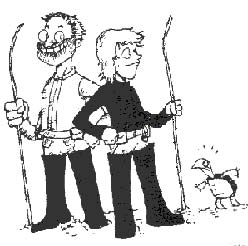 Boy, was I excited when my friend and co-worker asked me if I'd like to go turtle hunting with him! He is always looking for news ideas, for articles and pictures - ADVENTURES, for crying out loud. How could I pass this trip up? He described the smooth backwaters of the Coosa River and the pat, pat, pat of the mud under your feet as you tracked the turtles. Then he showed me a fascinating (but primitive looking ) tool of sorts that you use to search the mud for turtles.
Read more...
Boy, was I excited when my friend and co-worker asked me if I'd like to go turtle hunting with him! He is always looking for news ideas, for articles and pictures - ADVENTURES, for crying out loud. How could I pass this trip up? He described the smooth backwaters of the Coosa River and the pat, pat, pat of the mud under your feet as you tracked the turtles. Then he showed me a fascinating (but primitive looking ) tool of sorts that you use to search the mud for turtles.
Read more...
Amazon Jungle
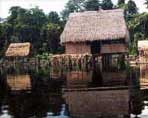 EXTREME - the only word fit to describe the Peruvian Amazon jungle.Abundant with life sustaining resources, it is perhaps the easiest place in the world to survive with nothing more than a good blade, however, torrential rain, high humidity, equatorial sun, biting insects and thick jungle produces the most mentally demanding survival situation one could ever face. Introducing yourself to this environment, initially forces the question, "what the Hell am I doing here?," but as the days pass by, a metamorphosis takes place, and you realize in order to survive, you must adapt taking everything the jungle throws at you, enjoying it and asking for more.
Read more...
EXTREME - the only word fit to describe the Peruvian Amazon jungle.Abundant with life sustaining resources, it is perhaps the easiest place in the world to survive with nothing more than a good blade, however, torrential rain, high humidity, equatorial sun, biting insects and thick jungle produces the most mentally demanding survival situation one could ever face. Introducing yourself to this environment, initially forces the question, "what the Hell am I doing here?," but as the days pass by, a metamorphosis takes place, and you realize in order to survive, you must adapt taking everything the jungle throws at you, enjoying it and asking for more.
Read more...
Wingbone Turkey Calls
 The Indian of the Southern United States was always a master of his environment. "Waste not, want not," was his unspoken philosophy. His continued existence depended upon a keen eye to the ebb and flow of the world around him. Everything he gathered or killed had a use and a purpose; whether it was a deer, turkey, bear or a medicinal plant, he knew that his very life hung on that narrow thread of making the most out of every part of the animal or plant he was utilizing. The white tailed deer which fell to his atlatl or bow fed and clothed his family and provided the materials needed to produce the weapon with which to kill the next deer. Dogbane provided him with the cordage he needed for his bowstring, traps, snares and nets while the plant kingdom filled the empty bellies of his wife and child. By necessity, early man became the ultimate recycler, wasting nothing.
Read more...
The Indian of the Southern United States was always a master of his environment. "Waste not, want not," was his unspoken philosophy. His continued existence depended upon a keen eye to the ebb and flow of the world around him. Everything he gathered or killed had a use and a purpose; whether it was a deer, turkey, bear or a medicinal plant, he knew that his very life hung on that narrow thread of making the most out of every part of the animal or plant he was utilizing. The white tailed deer which fell to his atlatl or bow fed and clothed his family and provided the materials needed to produce the weapon with which to kill the next deer. Dogbane provided him with the cordage he needed for his bowstring, traps, snares and nets while the plant kingdom filled the empty bellies of his wife and child. By necessity, early man became the ultimate recycler, wasting nothing.
Read more...
Forecast The Weather By Nature
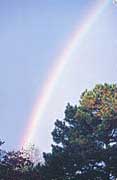 For millennia, primitive and not-so-primitive societies have depended upon close observation of nature to forecast both short and long range changes in the weather. Without the aid of modern scientific methods of reading weather patterns, it was necessary to develop a keen eye for natural “predictors” which indicated change.
Read more...
For millennia, primitive and not-so-primitive societies have depended upon close observation of nature to forecast both short and long range changes in the weather. Without the aid of modern scientific methods of reading weather patterns, it was necessary to develop a keen eye for natural “predictors” which indicated change.
Read more...
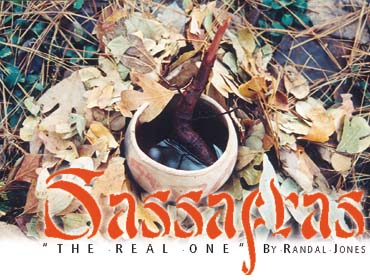 Sassafras' medicinal value was first introduced to the Europeans in the mid-1950's. Around this time, a naive group of French Huguenots attempted to colonize a very small section, of what is now, northeastern Florida. These Frenchmen failed miserably. They failed because they did not grow any food! They relied on the indigenous people for almost everything. Needless to say, these Frenchmen got to know the habits of their native saviors very well. And, there were two such habits that the French colonists thought were worthy of note. One was the smoking of tobacco and the other was the consumption of sassafras.
Read more...
Sassafras' medicinal value was first introduced to the Europeans in the mid-1950's. Around this time, a naive group of French Huguenots attempted to colonize a very small section, of what is now, northeastern Florida. These Frenchmen failed miserably. They failed because they did not grow any food! They relied on the indigenous people for almost everything. Needless to say, these Frenchmen got to know the habits of their native saviors very well. And, there were two such habits that the French colonists thought were worthy of note. One was the smoking of tobacco and the other was the consumption of sassafras.
Read more...
Why Not Bugs?
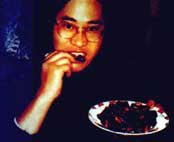 What is it that Australian Aborigines, Kung Bushmen of South Africa, Chinese Peasants and connoisseurs of haute cuisine in Europe know that the average American does not? They know that bugs make for some mighty fine eating!
Read more...
What is it that Australian Aborigines, Kung Bushmen of South Africa, Chinese Peasants and connoisseurs of haute cuisine in Europe know that the average American does not? They know that bugs make for some mighty fine eating!
Read more...
